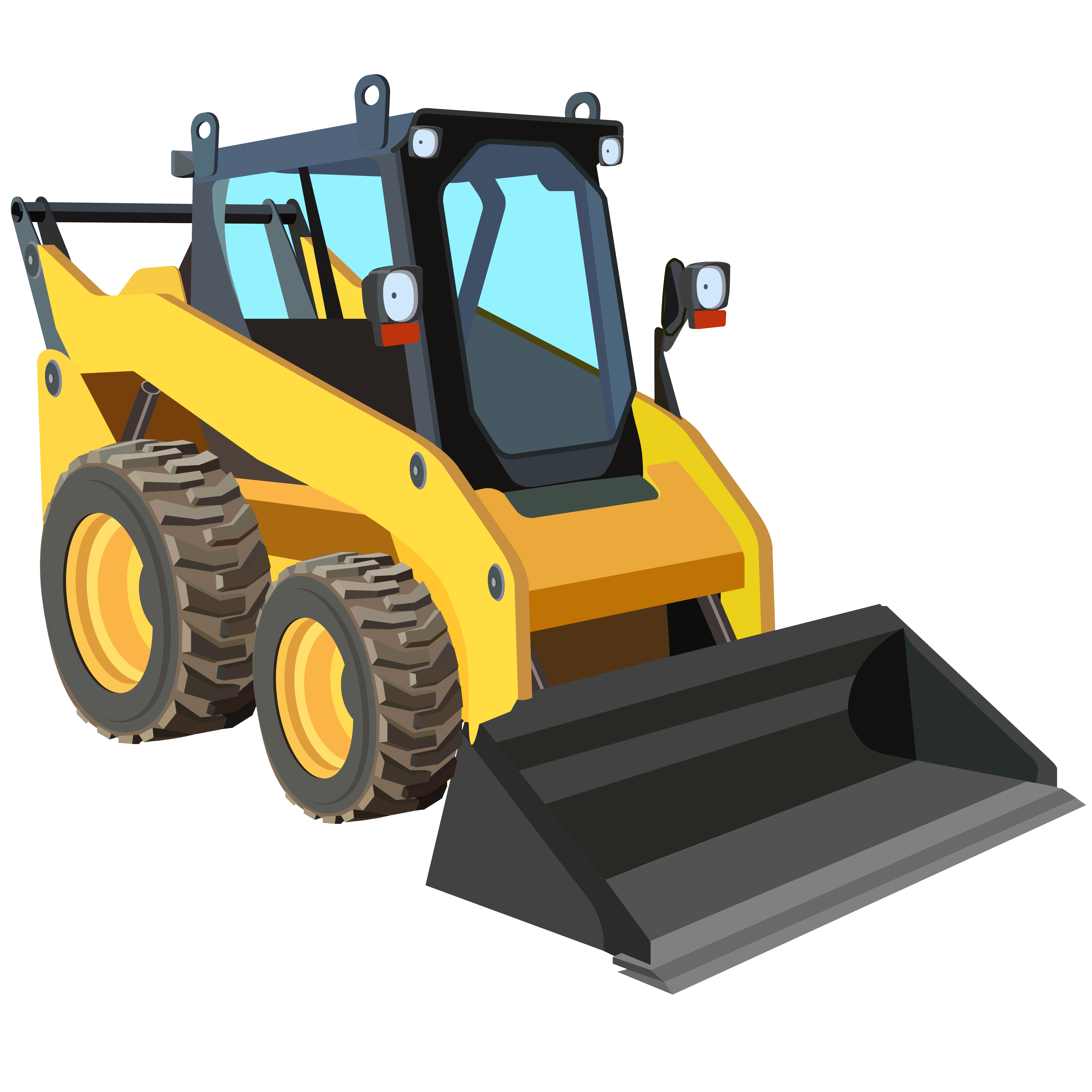Call or WhatsApp today for a free quote : +1 (416) 660-5054
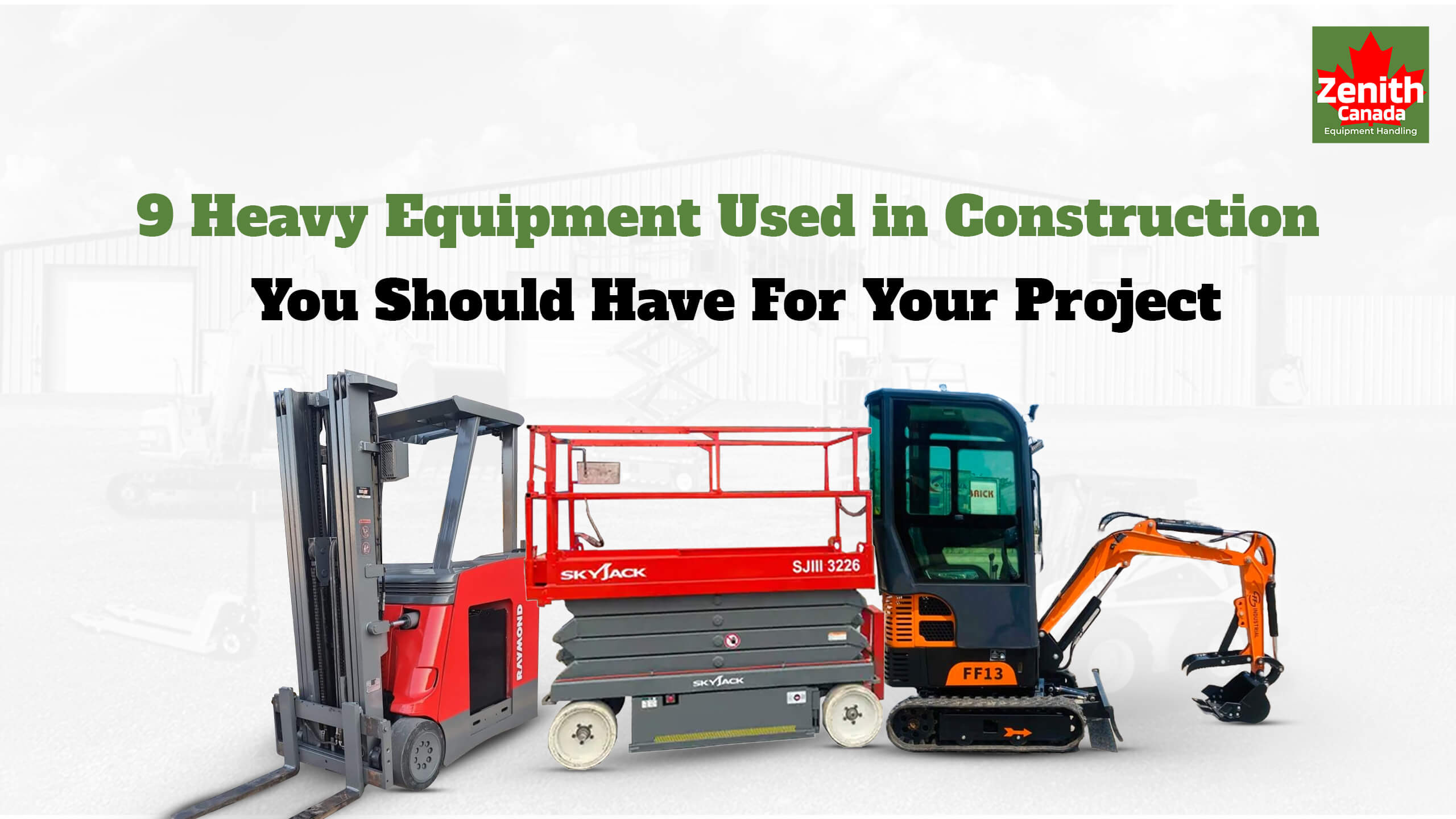
9 Heavy Equipment Used in Construction You Should Have For Your Project
Most construction companies in Canada work on versatile projects, both in urban and offbeat areas, constructing commercial spaces, residential buildings, industrial units, warehouses, manufacturing houses, and many more. When a construction project is acquired and finalized, it is the responsibility of the project manager and the chief engineer to decide the types of equipment units to use for completing all the necessary tasks, be it excavating earth and digging trenches or carrying our lifting operations. While there are countless such machinery types often being preferred, today we will be focused solely on heavy-duty equipment used in construction across Canada.
These are known for their ability to carry out heavy-duty tasks, like digging the earth, lifting pallets of construction materials, making trenches, and loading rubbles and waste materials efficiently and without requiring too much manual interference. Since they are necessary for streamlining construction projects of all sizes, you must learn about them before preparing the equipment list to be used for your project. With this being said, we will give you a brief walkthrough of the most used heavy equipment types for construction works, both on-site and off-site in this below article.
Skid Steer Loader
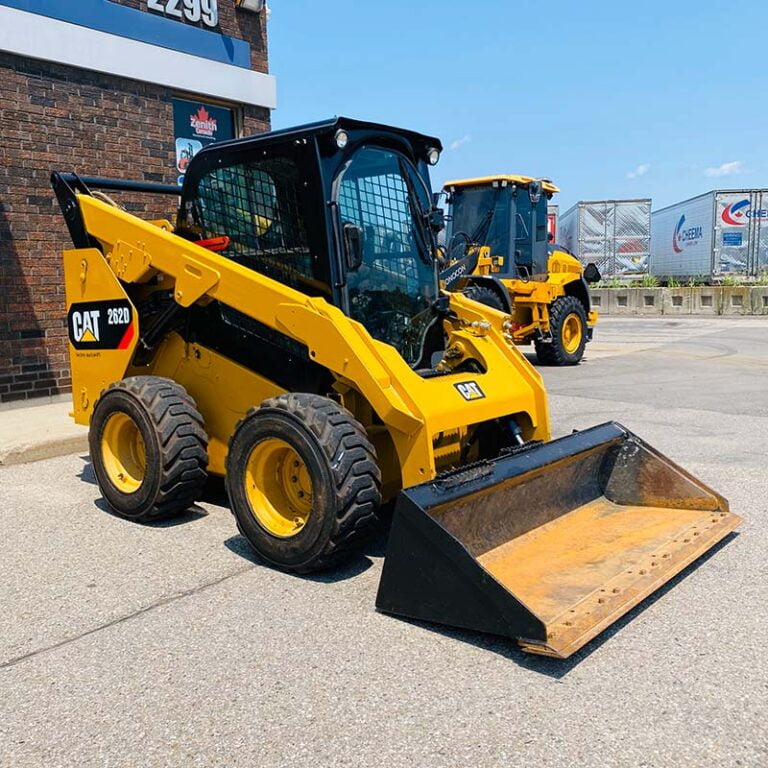
A skid steer loader is meant to be used for versatile construction operations on-site, including but not limited to lifting heavyweight items, moving materials from one place to another, and digging the earth. Its unique steering mechanism allows the right and left tracks to move in opposite directions and lock the vehicle from any further displacement. Also, it’s better suited for carrying out different operations in confined spaces, thanks to the zero-turning radius that allows 360 degrees within its footprint. On top of everything, this equipment used in construction comes with 4WD or 4 Wheel drive mechanism for better movements along rugged and undulating terrains with ease.
Forklift
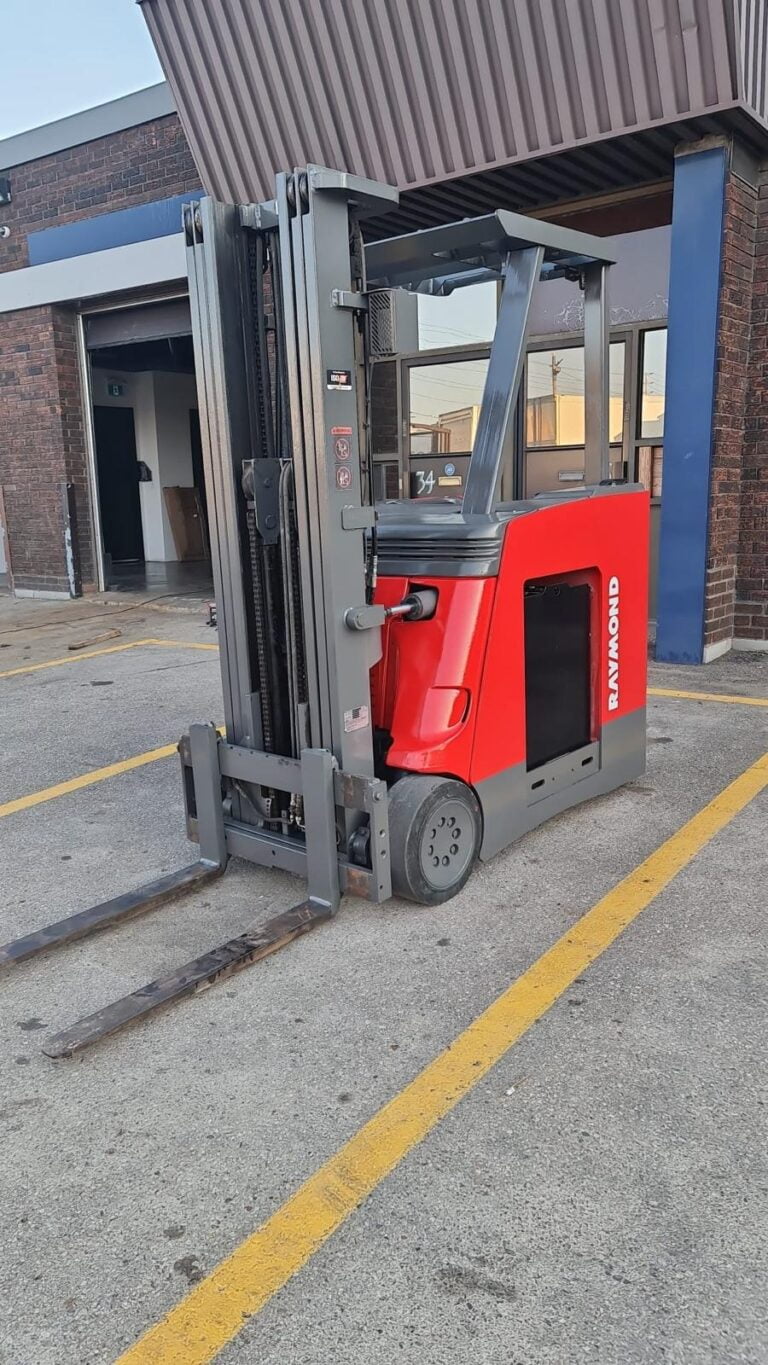
Another important equipment used in construction sites and warehouses is the forklift. Equipped with two fork-like arms at the front, it can be used to lift heavy materials, including pallets, boxes, and many more without any manual assistance. Thanks to the adjustable forks, a forklift can be employed to lift different pallet sizes with ease. Available in both electric and diesel-powered engine configurations, it is easy to maneuver in tight spaces and increases overall work efficiency and productivity. Additionally, the advanced control system allows the operator to move the vehicle properly without causing any damage or mishap at the construction site or the warehouse.
Pallet Jack
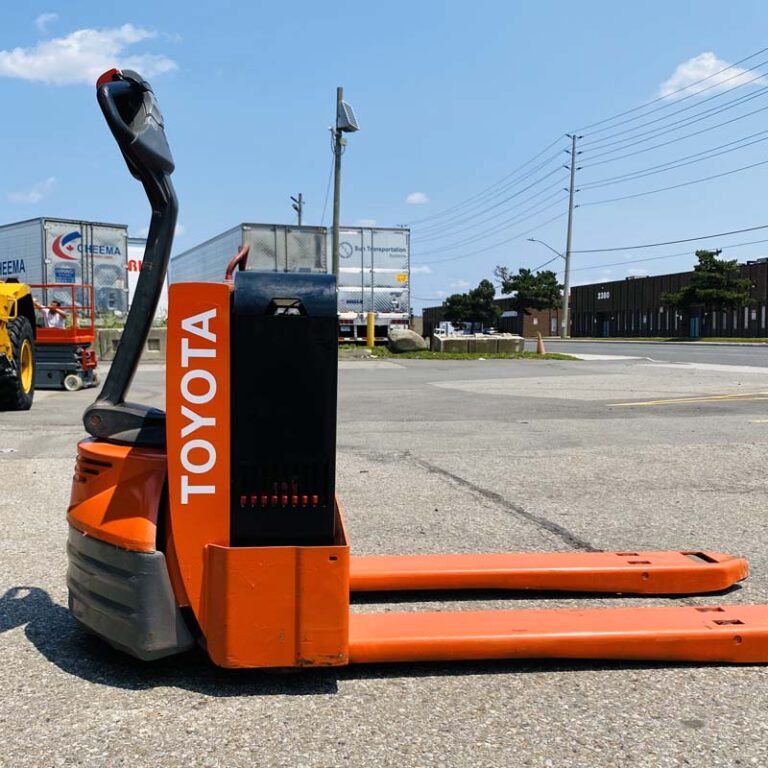
You will often see construction materials being loaded in different-sized pallets at warehouses or the construction site itself. Carrying these manually can cause workplace injuries or immense damage to the materials. That’s why using a pallet jack is more feasible as it can carry stacks of pallets easily without any manual assistance. They have varying load-bearing capacities, which is why you won’t have to worry about material transportation from one place to another. Also, they are reinforced with two small-sized front wheels for easier maneuverability in confined spaces, especially during landscaping, pavement construction, and indoor usage.
Scissor Lift
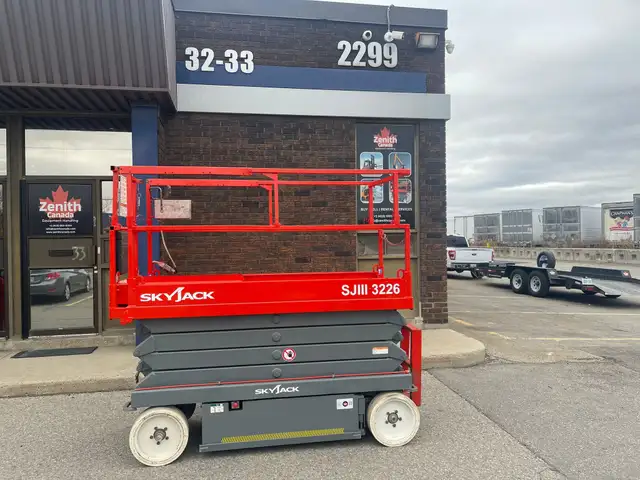
A scissor lift is perhaps one of the best safety equipment used in construction industry for carrying out secured and hassle-free lifting operations for both personnel and construction materials. It can easily reach an elevation height of 15 to 60 feet depending on the machine’s configuration while handling a total load of 1000 pounds. Thanks to the scissor-like lifting mechanism, this Aerial Work Platform doesn’t occupy too much of a vertical footprint and hence can be used in confined spaces. A scissor lift is best suited for carrying out tasks like ceiling installation, wiring, roof construction, external wall painting, and many more at different construction sites.
Mini Excavators
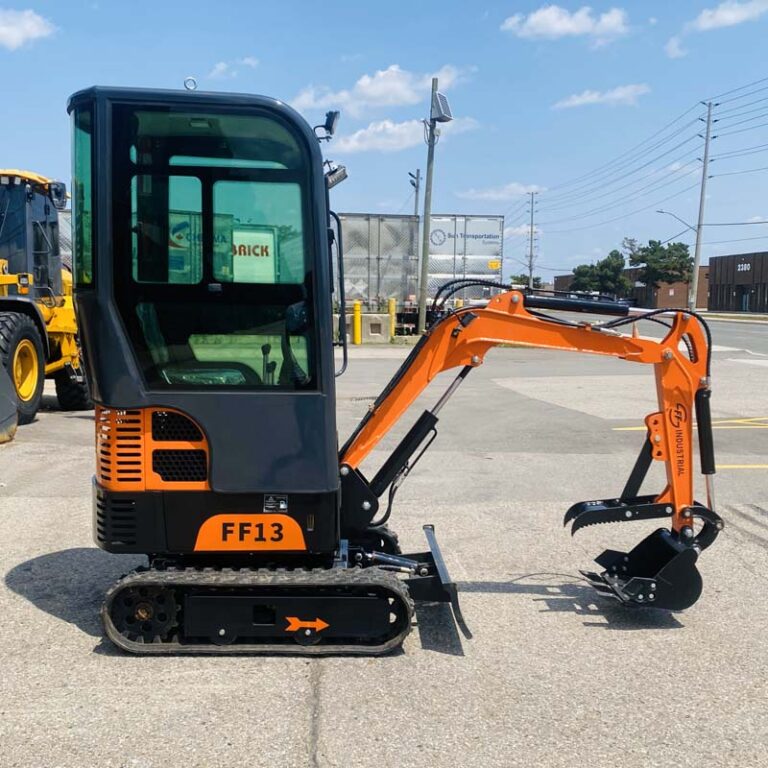
Given the area constraints in most construction project sites across Canada, using a mini excavator over a traditional, full-scale one is obviously a far better option. It is generally used to excavate the earth and make holes or trenches but you can deploy it for several other purposes, like cutting trees, demolition of structures, and river dredging. The front arm of the excavator comes with a large bucket having spiked teeth for digging and cutting operations. Its movement can be controlled from the cabin, which has a complete 360-degree rotatable structure for easy maneuverability.
Bulldozer
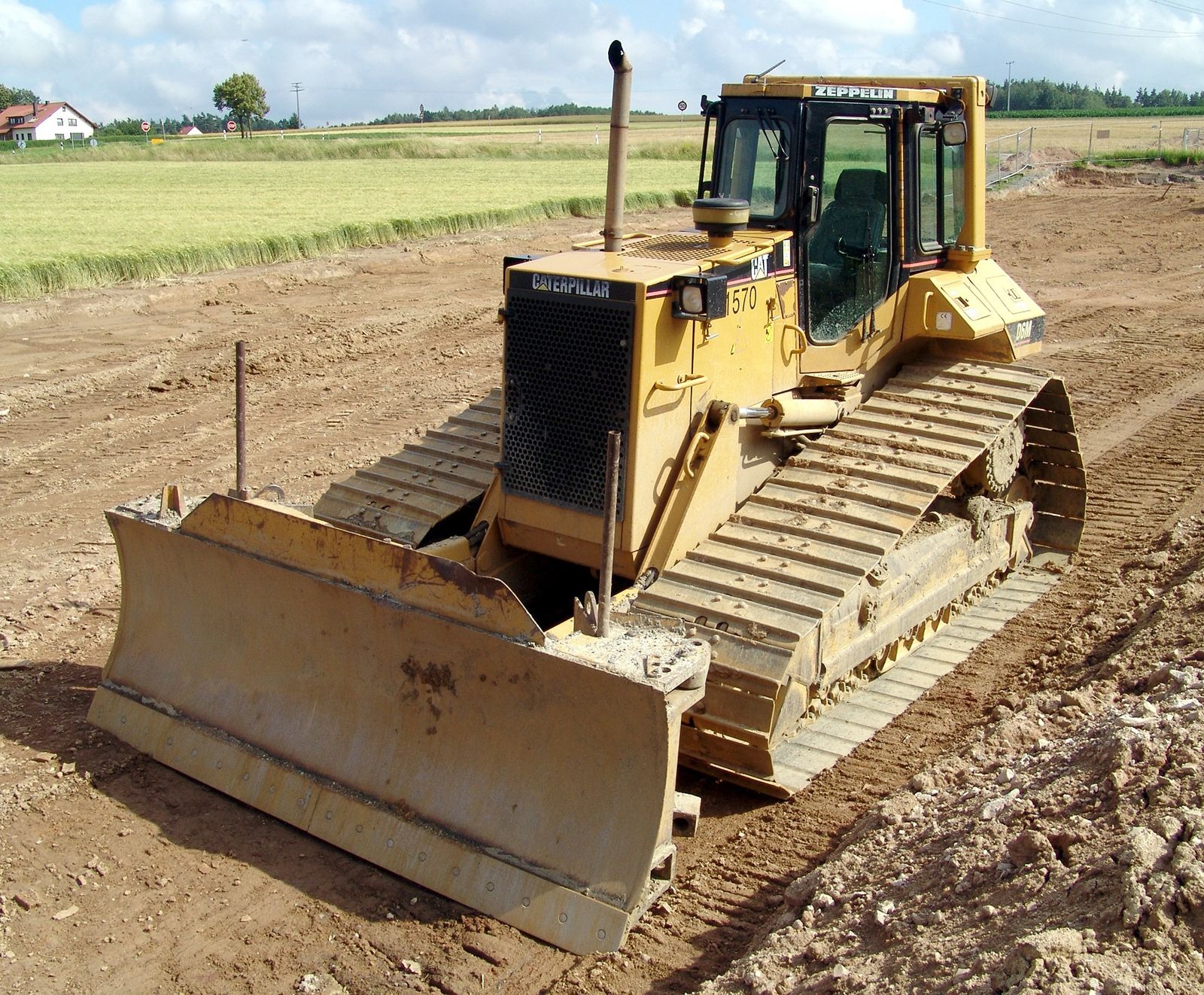
Primarily used for removing the topsoil layer and loose rock strata up to a specific depth, a bulldozer is one of the most important heavy-duty excavation machinery types used at several construction sites. It comes with a sharp blade at the front having adjustable angle and height configuration to suit the job with ease. Most bulldozers have to be operated over undulating and rugged terrains having a non-uniform topography, which is why they are reinforced with trackers or crawlers. Also, a few bulldozer models come with a reaper at the rear end to break down hard rocks and stubborn materials for easier excavation and removal.
Tower Crane

Used for hoisting up heavy construction materials in a bulk quantity for constructing tall buildings, a tower crane is quite useful in reducing manual efforts and eliminating workplace injuries significantly. It has a huge load-bearing capacity, which makes it suitable for lifting concrete blocks, steel frames, metal trusses, and many other bulky items to a long height. The entire structure can be divided into four parts, namely the vertical supporting tower called the mast, the operating arm known as the jib, the weight-carrying arm at the rear end called the counter jib, and a cabin for equipment operation and control.
Paver
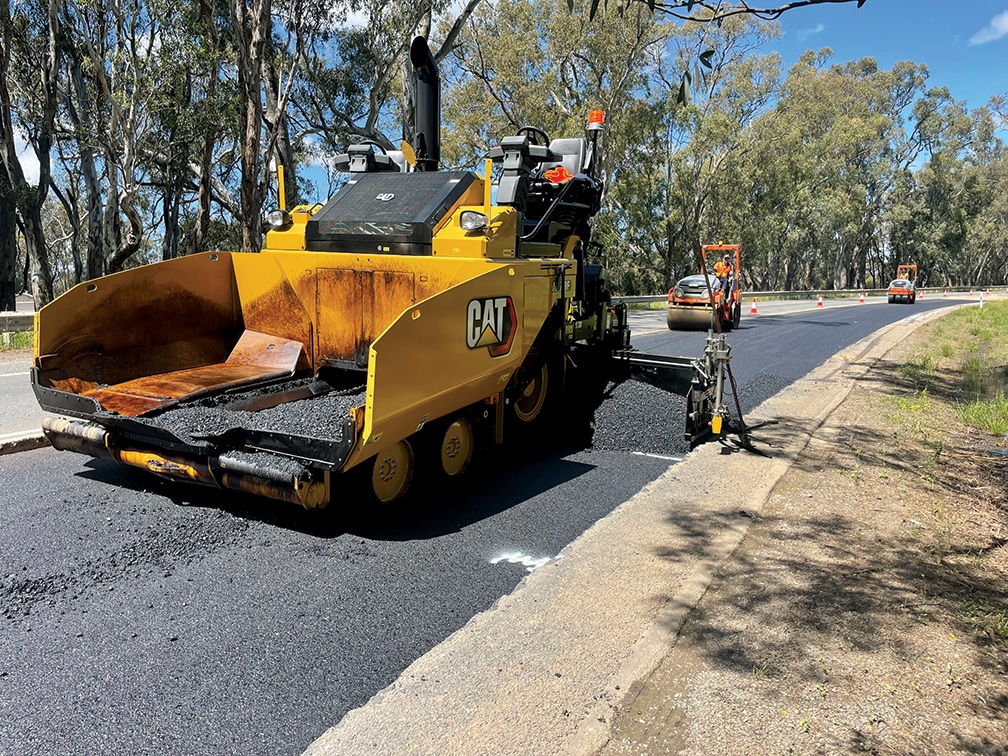
Construction projects involving road and highway construction often use pavers. They come with a feeding bucket, which is further attached to a dump truck so that the asphalt or paving mix can be poured continuously and with ease. The mix is then uniformly spread over the soil surface, ensuring there is a slight compaction. Once the paver does its job of distributing the asphalt mix, a roller is also used to eliminate air holes and increase the compactness.
Trencher
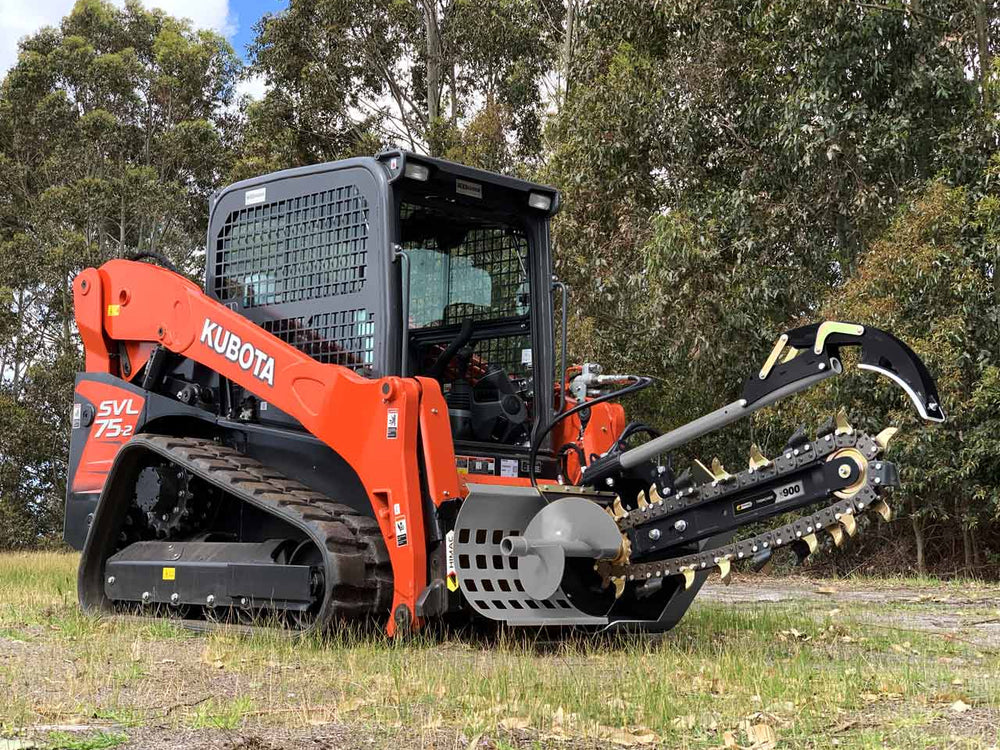
Last but not least, we have trenchers on our list of heavy-duty equipment used in construction that are mainly used to dig out trenches of varying diameters and depths in the soil. These trenches are further used for cable lying, pipelines, drainage, and many other related purposes. There are two different forms of trenchers, namely chain and wheeled trenchers. While chain trenchers come with a chain wrapped around their fixed-length arm for easier digging purposes, wheeled trenchers have spikes in their wheels to break down and excavate hard rock layers. Also, both types come with a 4WD configuration to ensure the equipment can be moved over rugged and non-uniform terrain without any hassle.

Conclusion
In this detailed article, we have illustrated the top 9 types of heavy equipment used in construction projects across Canada. If you want to purchase some of the equipment units for your upcoming project, no other place will be as promising as Zenith Canada. Not only does it offer a versatile range of forklifts, pallet jacks, and skid steer loaders but it also ensures the models are of the latest type with advanced configurations that can increase the overall efficiency and productivity of your project. So, connect with us at the earliest and ask for a free quotation based on your choice of equipment units and the number.
